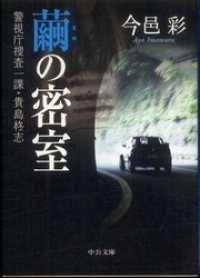Full Description
In this volume, nearly forty internationally recognized researchers have come together to celebrate the work of the famous Anatolianist and Indo-Europeanist H. Craig Melchert. The topics range widely, covering not only the grammar and lexicon of Anatolian languages but also Tocharian, Latin, Phrygian, and many others. Some of the essays represent major new contributions to the field that no specialist can afford to overlook. Both long-established scholars such as J. David Hawkins, Anna Morpurgo Davies, Harry A. Hoffner, Jr., Jay Jasanoff, Norbert Oettinger, Calvert Watkins, and the late Roberto Gusmani, as well as younger scholars such as Alexandra Daues, Petra Goedegebuure, Alwin Kloekhorst, Ronald Kim, and Jeremy Rau have contributed the fruits of cutting-edge research in Melchert's honor. A complete bibliography of Melchert's works is included, and the volume closes with a word-index. One colour plate presents a previously unpublished Hieroglyphic Luvian inscription. Contributions in English, German, Italian.
Contents
Table of Contents
Preface.................................................................................................. ix
Bibliography of H. Craig Melchert.......................................................... xi
Ignacio J. Adiego, On Lycian Genitives in -h, -he.......................................
Alexandra Daues, Zur Korrelation der hethitischen Konjunktion kuitman mit dem Verbalsuffix -ške
George Dunkel, The IE s-Aorist As an Athematic Denominative................
Benjamin W. Fortson IV, On the (Non-)Antiquity of Clause-Internal -kan in Hittite....
Victor A. Friedman, The Age of the Albanian Admirative:
A Problem in Historical Semantics.........................................................
José Luis García Ramón, On Hittite Verbs of the Type mimma-hhi 'refuse':
Aktionsart and Aspect in Indo-European Reconstruction........................
Petra Goedegebuure, Deictic-Emphatic -i and the Anatolian Demonstratives
Roberto Gusmani†, Tracce anatoliche di una desinenza verbale indoeuropea ?
Olav Hackstein, Lateinisch omnis..........................................................
Mark Hale, Návyasa¯ vácah. :To Praise With a Really Old Word ..................
J. David Hawkins and Anna Morpurgo Davies,
More Negatives and Disjunctives in Hieroglyphic Luwian.......................
Heinrich Hettrich, Nochmals zu den -ya'¯-Adverbien im Rgveda ...............
Harry A. Hoffner, Jr., Logographic Plural Markers in Hittite Cuneiform Texts .
Stephanie Jamison, Su'¯re Duhitár's Brother, the "Placer of the Sun":
Another Example of - *- in Rigvedic Phrasal Sandhi.........................
Jay H. Jasanoff, The Luvian "Case" in -ša/-za.......................................
Brian D. Joseph, Revisiting the Origin of the Albanian pl. Verbal Ending -ni . .
Folke Josephson, Hittite -apa, -šan, and -kan as Actional Modifiers.......
Ronald I. Kim, Possible Tocharian Evidence for Root Ablaut in PIE Thematic Presents?..
Jared S. Klein, Personal Pronoun Sequences in the Rigveda...................
Alwin Kloekhorst, Hitt. ma¯n, mahhan, ma¯hhan, ma¯hhanda and ma¯nhanda
Rosemarie Lühr, Zum Mittelfeld in altindogermanischen Sprache
Silvia Luraghi, Experiencer Predicates in Hittite
Melanie Malzahn and Martin Peters, How (Not) to Compare Tocharian
and Ancient Greek Verbal Stems........................................................................
Alan J. Nussbaum, PIE -Cmn- and Greek τρα¯ν�ς 'clear' ........................................
Norbert Oettinger, Die indogermanischen Wörter für ,Schlange'..........................
Georges-Jean Pinault, On the r-Endings of the Tocharian Middle.........................
Massimo Poetto, Un nuovo verbo luvio-geroglifico: zapa-,
e la sua correlazione al luvio cuneiforme zapp(a)-............................................
Jaan Puhvel, Fiery Seed: Remarks on the Tiers of Hittite Royalty..........................
Jeremy Rau, The Derivational History of PIE *diéu-/diu-'
'(god of the) day-lit sky; day'............................................................
Elisabeth Rieken and Paul Widmer, Spaltsatzphänomene im Hethitischen..............
Don Ringe, "Thorn" Clusters and Indo-European Subgrouping.............................
Johann Tischler, Einige Fehlschreibungen und Fehllesungen
in hethitischen Texten.....................................................................................
Brent Vine, Old Phrygian iman...........................................................................
Calvert Watkins, Toward a Hittite Stylistics:
Remarks on Some Phonetic and Grammatical Figures..........................................
Michael Weiss, Two Sabellic Praenomina................................................................
Ilya Yakubovich, Hittite aniye/a- 'to do'..............................................................
Kazuhiko Yoshida, Observations on the Prehistory of Hittite ie/a-Verbs................
Index Verborum...................................................................................................








